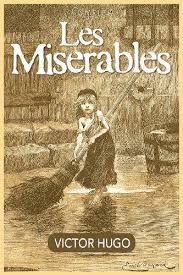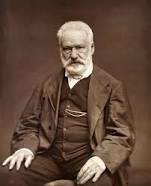Les Misérables
Les Misérables is a French historical novel by Victor Hugo, first published in 1862, that is considered one of the greatest novels of the 19th century. In the English-speaking world, the novel is usually referred to by its original French title.
PREFACE So long as there shall exist, by virtue of law and custom, decrees of damnation pronounced by society, artificially creating hells amid the civilization of earth, and adding the element of human fate to divine destiny; so long as the three great problems of the century--the degradation of man through pauperism, the corruption of woman through hunger, the crippling of children through lack of light--are unsolved; so long as social asphyxia is possible in any part of the world;--in other words, and with a still wider significance, so long as ignorance and poverty exist on earth, books of the nature of Les Misérables cannot fail to be of use. HAUTEVILLE HOUSE, 1862. FANTINE BOOK FIRST--A JUST MAN CHAPTER I--M. MYRIEL In 1815, M. Charles-François-Bienvenu Myriel was Bishop of D---- He was an old man of about seventy-five years of age; he had occupied the see of D---- since 1806. Although this detail has no connection whatever with the real substance of what we are about to relate, it will not be superfluous, if merely for the sake of exactness in all points, to mention here the various rumors and remarks which had been in circulation about him from the very moment when he arrived in the diocese. True or false, that which is said of men often occupies as important a place in their lives, and above all in their destinies, as that which they do. M. Myriel was the son of a councillor of the Parliament of Aix; hence he belonged to the nobility of the bar. It was said that his father, destining him to be the heir of his own post, had married him at a very early age, eighteen or twenty, in accordance with a custom which is rather widely prevalent in parliamentary families. In spite of this marriage, however, it was said that Charles Myriel created a great deal of talk. He was well formed, though rather short in stature, elegant, graceful, intelligent; the whole of the first portion of his life had been devoted to the world and to gallantry. The Revolution came; events succeeded each other with precipitation; the parliamentary families, decimated, pursued, hunted down, were dispersed. M. Charles Myriel emigrated to Italy at the very beginning of the Revolution. There his wife died of a malady of the chest, from which she had long suffered. He had no children. What took place next in the fate of M. Myriel? The ruin of the French society of the olden days, the fall of his own family, the tragic spectacles of '93, which were, perhaps, even more alarming to the emigrants who viewed them from a distance, with the magnifying powers of terror,--did these cause the ideas of renunciation and solitude to germinate in him? Was he, in the midst of these distractions, these affections which absorbed his life, suddenly smitten with one of those mysterious and terrible blows which sometimes overwhelm, by striking to his heart, a man whom public catastrophes would not shake, by striking at his existence and his fortune? No one could have told: all that was known was, that when he returned from Italy he was a priest. In 1804, M. Myriel was the Curé of B---- [Brignolles]. He was already advanced in years, and lived in a very retired manner. About the epoch of the coronation, some petty affair connected with his curacy--just what, is not precisely known--took him to Paris. Among other powerful persons to whom he went to solicit aid for his parishioners was M. le Cardinal Fesch. One day, when the Emperor had come to visit his uncle, the worthy Curé, who was waiting in the anteroom, found himself present when His Majesty passed. Napoleon, on finding himself observed with a certain curiosity by this old man, turned round and said abruptly:-- "Who is this good man who is staring at me?" "Sire," said M. Myriel, "you are looking at a good man, and I at a great man. Each of us can profit by it." That very evening, the Emperor asked the Cardinal the name of the Curé, and some time afterwards M. Myriel was utterly astonished to learn that he had been appointed Bishop of D---- What truth was there, after all, in the stories which were invented as to the early portion of M. Myriel's life? No one knew. Very few families had been acquainted with the Myriel family before the Revolution. M. Myriel had to undergo the fate of every newcomer in a little town, where there are many mouths which talk, and very few heads which think. He was obliged to undergo it although he was a bishop, and because he was a bishop. But after all, the rumors with which his name was connected were rumors only,--noise, sayings, words; less than words--palabres, as the energetic language of the South expresses it. However that may be, after nine years of episcopal power and of residence in D----, all the stories and subjects of conversation which engross petty towns and petty people at the outset had fallen into profound oblivion. No one would have dared to mention them; no one would have dared to recall them. M. Myriel had arrived at D---- accompanied by an elderly spinster, Mademoiselle Baptistine, who was his sister, and ten years his junior. Their only domestic was a female servant of the same age as Mademoiselle Baptistine, and named Madame Magloire, who, after having been the servant of M. le Curé, now assumed the double title of maid to Mademoiselle and housekeeper to Monseigneur. Mademoiselle Baptistine was a long, pale, thin, gentle creature; she realized the ideal expressed by the word "respectable"; for it seems that a woman must needs be a mother in order to be venerable. She had never been pretty; her whole life, which had been nothing but a succession of holy deeds, had finally conferred upon her a sort of pallor and transparency; and as she advanced in years she had acquired what may be called the beauty of goodness. What had been leanness in her youth had become transparency in her maturity; and this diaphaneity allowed the angel to be seen. She was a soul rather than a virgin. Her person seemed made of a shadow; there was hardly sufficient body to provide for sex; a little matter enclosing a light; large eyes forever drooping;--a mere pretext for a soul's remaining on the earth. Madame Magloire was a little, fat, white old woman, corpulent and bustling; always out of breath,--in the first place, because of her activity, and in the next, because of her asthma. On his arrival, M. Myriel was installed in the episcopal palace with the honors required by the Imperial decrees, which class a bishop immediately after a major-general. The mayor and the president paid the first call on him, and he, in turn, paid the first call on the general and the prefect. The installation over, the town waited to see its bishop at work. CHAPTER II--M. MYRIEL BECOMES M. WELCOME The episcopal palace of D---- adjoins the hospital. The episcopal palace was a huge and beautiful house, built of stone at the beginning of the last century by M. Henri Puget, Doctor of Theology of the Faculty of Paris, Abbé of Simore, who had been Bishop of D---- in 1712. This palace was a genuine seignorial residence. Everything about it had a grand air,--the apartments of the Bishop, the drawing-rooms, the chambers, the principal courtyard, which was very large, with walks encircling it under arcades in the old Florentine fashion, and gardens planted with magnificent trees. In the dining-room, a long and superb gallery which was situated on the ground-floor and opened on the gardens, M. Henri Puget had entertained in state, on July 29, 1714, My Lords Charles Brûlart de Genlis, archbishop; Prince d'Embrun; Antoine de Mesgrigny, the capuchin, Bishop of Grasse; Philippe de Vendôme, Grand Prior of France, Abbé of Saint Honoré de Lérins; François de Berton de Crillon, bishop, Baron de Vence; César de Sabran de Forcalquier, bishop, Seignor of Glandève; and Jean Soanen, Priest of the Oratory, preacher in ordinary to the king, bishop, Seignor of Senez. The portraits of these seven reverend personages decorated this apartment; and this memorable date, the 29th of July, 1714, was there engraved in letters of gold on a table of white marble.
Translation
Translate and read this book in other languages:
Select another language:
- - Select -
- 简体中文 (Chinese - Simplified)
- 繁體中文 (Chinese - Traditional)
- Español (Spanish)
- Esperanto (Esperanto)
- 日本語 (Japanese)
- Português (Portuguese)
- Deutsch (German)
- العربية (Arabic)
- Français (French)
- Русский (Russian)
- ಕನ್ನಡ (Kannada)
- 한국어 (Korean)
- עברית (Hebrew)
- Gaeilge (Irish)
- Українська (Ukrainian)
- اردو (Urdu)
- Magyar (Hungarian)
- मानक हिन्दी (Hindi)
- Indonesia (Indonesian)
- Italiano (Italian)
- தமிழ் (Tamil)
- Türkçe (Turkish)
- తెలుగు (Telugu)
- ภาษาไทย (Thai)
- Tiếng Việt (Vietnamese)
- Čeština (Czech)
- Polski (Polish)
- Bahasa Indonesia (Indonesian)
- Românește (Romanian)
- Nederlands (Dutch)
- Ελληνικά (Greek)
- Latinum (Latin)
- Svenska (Swedish)
- Dansk (Danish)
- Suomi (Finnish)
- فارسی (Persian)
- ייִדיש (Yiddish)
- հայերեն (Armenian)
- Norsk (Norwegian)
- English (English)
Citation
Use the citation below to add this book to your bibliography:
Style:MLAChicagoAPA
"Les Misérables Books." Literature.com. STANDS4 LLC, 2025. Web. 22 Feb. 2025. <https://www.literature.com/book/les_mis%C3%A9rables_13>.








Discuss this Les Misérables book with the community:
Report Comment
We're doing our best to make sure our content is useful, accurate and safe.
If by any chance you spot an inappropriate comment while navigating through our website please use this form to let us know, and we'll take care of it shortly.
Attachment
You need to be logged in to favorite.
Log In